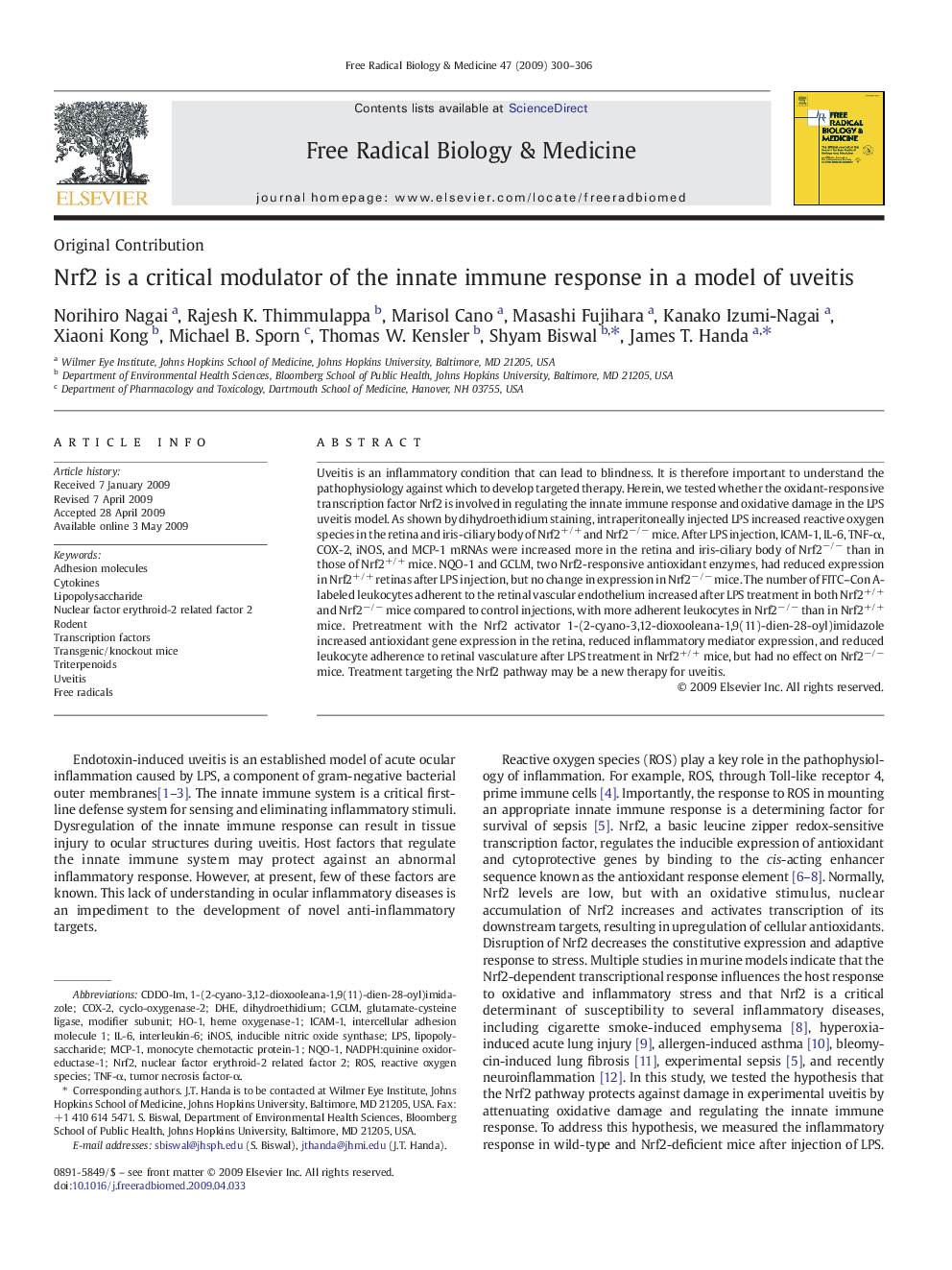| Article ID | Journal | Published Year | Pages | File Type |
|---|---|---|---|---|
| 1910069 | Free Radical Biology and Medicine | 2009 | 7 Pages |
Uveitis is an inflammatory condition that can lead to blindness. It is therefore important to understand the pathophysiology against which to develop targeted therapy. Herein, we tested whether the oxidant-responsive transcription factor Nrf2 is involved in regulating the innate immune response and oxidative damage in the LPS uveitis model. As shown by dihydroethidium staining, intraperitoneally injected LPS increased reactive oxygen species in the retina and iris-ciliary body of Nrf2+/+ and Nrf2−/− mice. After LPS injection, ICAM-1, IL-6, TNF-α, COX-2, iNOS, and MCP-1 mRNAs were increased more in the retina and iris-ciliary body of Nrf2−/− than in those of Nrf2+/+ mice. NQO-1 and GCLM, two Nrf2-responsive antioxidant enzymes, had reduced expression in Nrf2+/+ retinas after LPS injection, but no change in expression in Nrf2−/− mice. The number of FITC–Con A-labeled leukocytes adherent to the retinal vascular endothelium increased after LPS treatment in both Nrf2+/+ and Nrf2−/− mice compared to control injections, with more adherent leukocytes in Nrf2−/− than in Nrf2+/+ mice. Pretreatment with the Nrf2 activator 1-(2-cyano-3,12-dioxooleana-1,9(11)-dien-28-oyl)imidazole increased antioxidant gene expression in the retina, reduced inflammatory mediator expression, and reduced leukocyte adherence to retinal vasculature after LPS treatment in Nrf2+/+ mice, but had no effect on Nrf2−/− mice. Treatment targeting the Nrf2 pathway may be a new therapy for uveitis.
